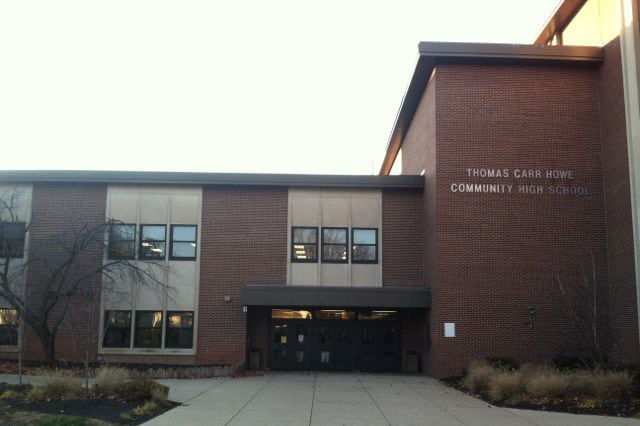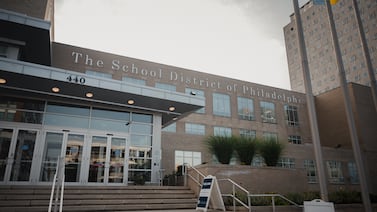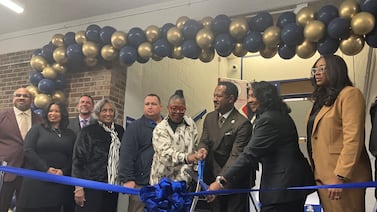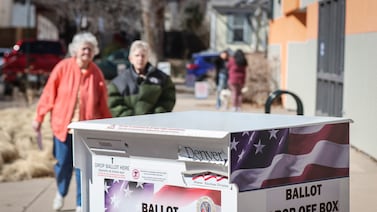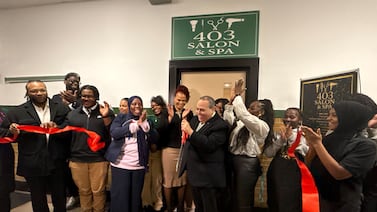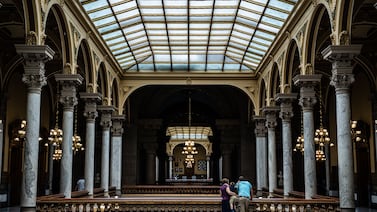Indianapolis Public Schools will ask voters for $410 million to fund athletic fields, new windows, fresh sidewalks, and a brand new 650-student elementary school when they head to the polls in May.
District officials say the tax increase is also needed to keep district buildings up to date. On average, the district’s buildings are 61 years old.
The referendum for capital expenses is part of the district’s Rebuilding Stronger reorganization. In addition to upgrades at 23 schools, the plan resurrects standalone middle schools throughout the district, beefs up academic offerings such as arts and computer science, and expands athletic offerings for middle school students.
In January, the school board delayed a vote on a separate referendum for operating expenses that would pay for Rebuilding Stronger’s academic programming changes.
The request for $410 million is about one-third of the district’s total $1.2 billion in deferred maintenance needs.
In 2018, voters approved a $52 million referendum for building safety upgrades. In 2008, voters approved a much larger upgrade when they passed a $278 million referendum for capital expenses to update 32 schools.
Now, some of those upgrades from 2008, such as HVAC units and windows, are in need of repair, said Deputy Superintendent Andrew Strope.
“We need to update those things so that students have a safe and welcoming place to spend their day,” Strope said.
For many homeowners, the tax increase would add a handful of extra dollars to their monthly tax bill.
Here’s what you need to know:
Why does IPS need $410 million?
A 2020 district analysis concluded that more than 30% of its buildings are in “poor” condition. That means the cost to renovate the building is between 30% and 40% of the building’s entire replacement cost.
IPS, like other school districts and public agencies, borrows money for facility investments in cycles. The district pays off that debt over decades.
Facility needs, such as plumbing, roofs, or HVAC systems, need to be replaced at the end of their life cycle. Putting off those necessary upgrades, however, can make things more expensive down the road.
The goal is to try not to leave the next generation with a big price tag, said CFO Weston Young.
“Right now we’re working with a big price tag because of the significant investments that were mad in the 2000s,” he said. “Very little has been done because all of it was new at that time. Now we’re getting to the point of the cycle where a lot of stuff is coming due.”
Which schools will get improvements?
The district has listed 23 schools for improvements, which vary based on the building’s need.
At William Penn School 49, for example, that means better plumbing, new sidewalks, and classroom upgrades so the school can become a STEM school as proposed under Rebuilding Stronger. The school is slated to receive $9.5 million in improvements, the district says.
At Thomas Carr Howe Middle School, which closed in 2020, $39.8 million will prepare the school to welcome students once again in 2024. That means improvements to its softball and baseball fields, and fixes to its interior lighting, plumbing, fire alarm system, roof, and windows.
Five of the 23 schools are schools within the district’s autonomous Innovation Network. These schools are in district buildings and are mostly run by charter operators.
See the full list of schools and their improvements here.
Why is the district asking for more money after voters approved a capital referendum in 2018?
The district’s $52 million capital referendum from 2018, which 76% of voters approved, was strictly for safety and security upgrades.
Those upgrades, which will be completed by the end of 2023, include improved door locks and outdoor lighting.
This much larger $410 capital referendum addresses outdated building needs beyond safety and security measures, which the 2018 referendum did not address.
How much will the referendum cost homeowners?
The district estimates that residents with a home value of $138,500 — the median value of homes within IPS borders — will see an extra $3.18 per month on their property tax bill.
You can estimate your monthly tax increase using the district’s calculator by entering the gross assessed value of your home here.
Your gross assessed value is the value of your home before any deductions, such as a homestead deduction. You can find your gross assessed value online by entering your property address on the city’s website here.
How does this affect the district’s total debt?
The district’s current tax rate for debt is roughly 52 cents per $100 of assessed value.
Some of that stems from debt issued through previous ballot questions that voters approved in 2008 and 2018. Debt from the 2008 referendum will be paid off in 2029. Debt from the 2018 referendum will be paid off by 2043.
The proposed referendum is set up to replace that older debt as it expires, while still maintaining a total debt rate of no more than 52 cents per $100. The district anticipates paying off debt from the proposed 2023 referendum by around 2046.
What will the ballot language look like?
Changes to state law in 2021 requires the school district to describe the tax increase as a percentage increase on the ballot question.
The ballot question for May says that the “average property tax paid to the school corporation per year on a residence would increase by 20.4%.”
The language means the portion of the average property tax bill dedicated to IPS will increase by 20.4%. It does not mean that a homeowner’s total property tax bill will increase by 20.4%. Many other taxing units aside from Indianapolis Public Schools, such as the city’s public transportation system or the Indianapolis Public Library, also receive a portion of the total amount shown on your tax bill.
What if the capital referendum doesn’t pass?
If the proposed referendum fails, it may take longer for these 23 buildings to receive upgrades.
The district estimates it would take eight years to bring all elementary and middle school facilities to “good” condition, meaning the buildings only require routine maintenance.
But if voters reject the referendum, officials would have to use a few other funding mechanisms that would likely take 14 to 15 years to bring those buildings up to date, Strope said.
“It will just take a lot longer to make some very much needed investments in some of our facilities,” he said. “This $410 million is a really big deal when it comes to making a pretty substantial investment that our students deserve.”
When and where do I vote for the IPS 2023 referendum?
Early voting starts April 4 at the Indianapolis City-County Building. Additional early voting sites open April 22.
On Election Day, May 2, polls are open 6 a.m to 6 p.m., and Marion County residents can vote at any of the county’s voting centers.
To find voting center locations for early voting and Election Day, apply for an absentee ballot and to see a sample ballot, visit vote.indy.gov.
For more details on the referendum, visit the IPS referendum website here.
Have a question that we did not address here? Reach out and let us know.
Amelia Pak-Harvey covers Indianapolis and Marion County schools for Chalkbeat Indiana. Contact Amelia at apak-harvey@chalkbeat.org. MJ Slaby contributed to this story.

